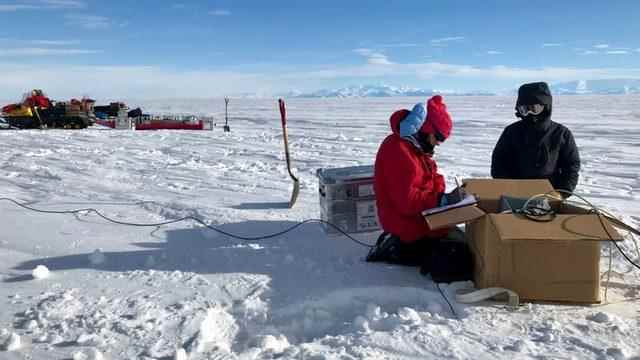An enormous amount of water has been found that has accumulated under the ice in the western region of the South Pole.
The discovery, described as a water reservoir with a depth of several hundred meters, was published in the prestigious scientific journal Science.
Scientists say the pond under the ice should be taken into account in climate change calculations about the future of the South Pole.
Water detected under the Whillans Ice Stream.
It is estimated that similar water reservoirs may be found elsewhere in the South Pole.
Lubricity
The water under the ice floes usually acts as a lubricant and makes the ice move more easily.
It is possible that the speed of movement of the glaciers will change depending on the reservoir being filled with more water or the decrease in water.
The water factor will now be added to the mathematical models used to calculate the impact of climate change on the South Pole.
Dr Chloe Gustafson, the head of the research team at the US-based Scripps Institute of Oceanography, who made the discovery, said that under the ice layer, there were mud and sand sediments from ancient times.
Dr Gustafson stated that this sediment attracts sea water like a sponge.
The team embarked on a six-week scientific expedition to the 800-metre-thick and 100-kilometer-wide mobile ice floe called the Whillans Ice Stream.
They studied the natural changes in the earth’s electric and magnetic fields to detect the presence of materials lying deep within.
This technique sheds light on whether rock, sediment, ice or water is present at the depths.
“It was previously suspected that there was water in the lower layers, but this is the first time we have been able to measure it,” said Professor Helen Fricker, a member of the research team.
The researchers emphasize that the key question is how the detected water feeds the lake and river network just below the ice floe, and how slick it provides.
Warm water
British-based scientist Dr. Tom Jordan thinks the groundwater may be warm because of the warmth of the deeper rocks.
Answering the BBC’s questions, Dr Jordan said that if it passes into the higher layers, the warm water will activate the ice floe and accelerate its flow.
Now scientists plan to examine whether a similar water reservoir may exist under the Thawiates Glacier, which covers a much larger area than the Whillans Ice Stream.
The rate of melting of the Thwaites Glacier has doubled in the last 30 years, and if it continues like this, it is predicted to have a serious impact on global sea level rise.
